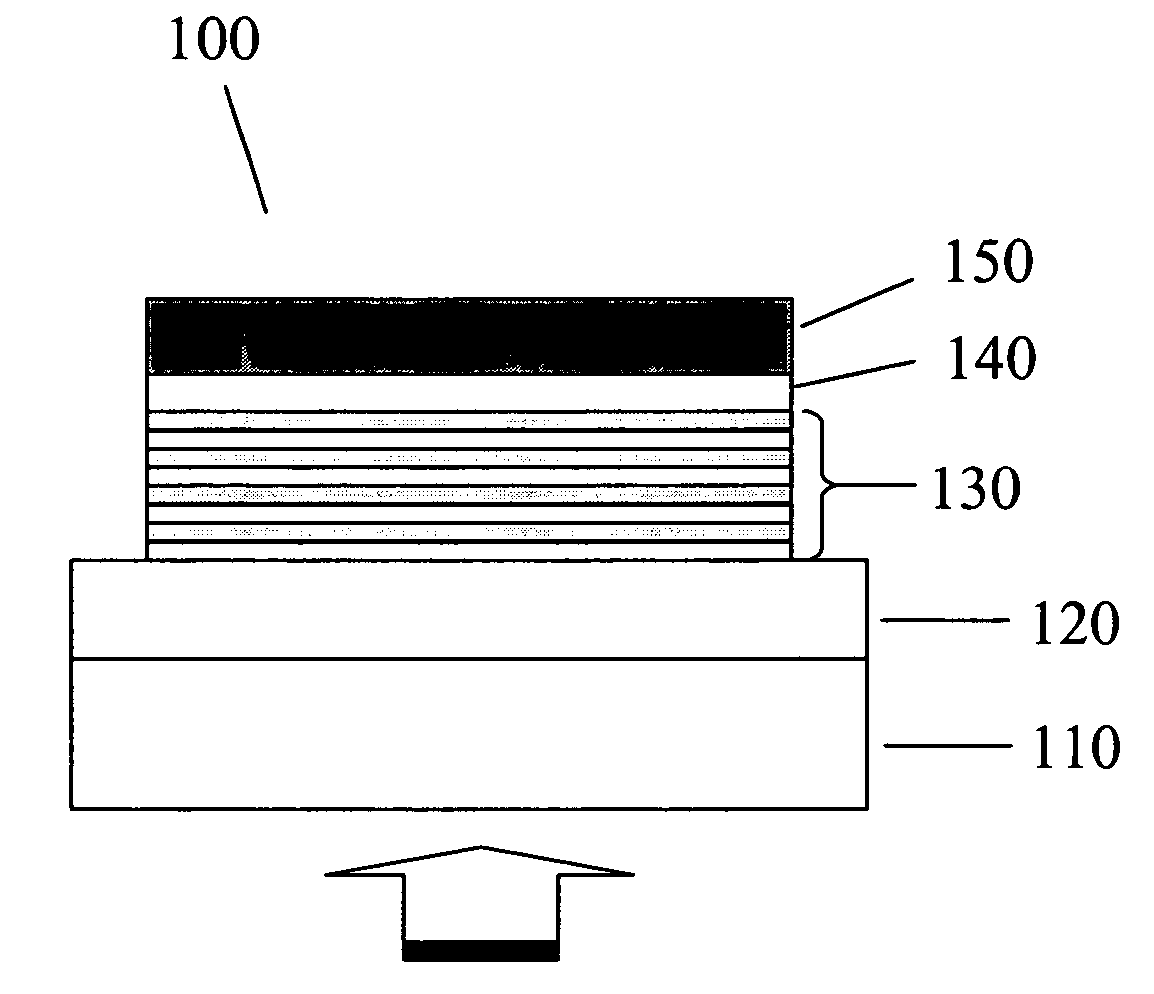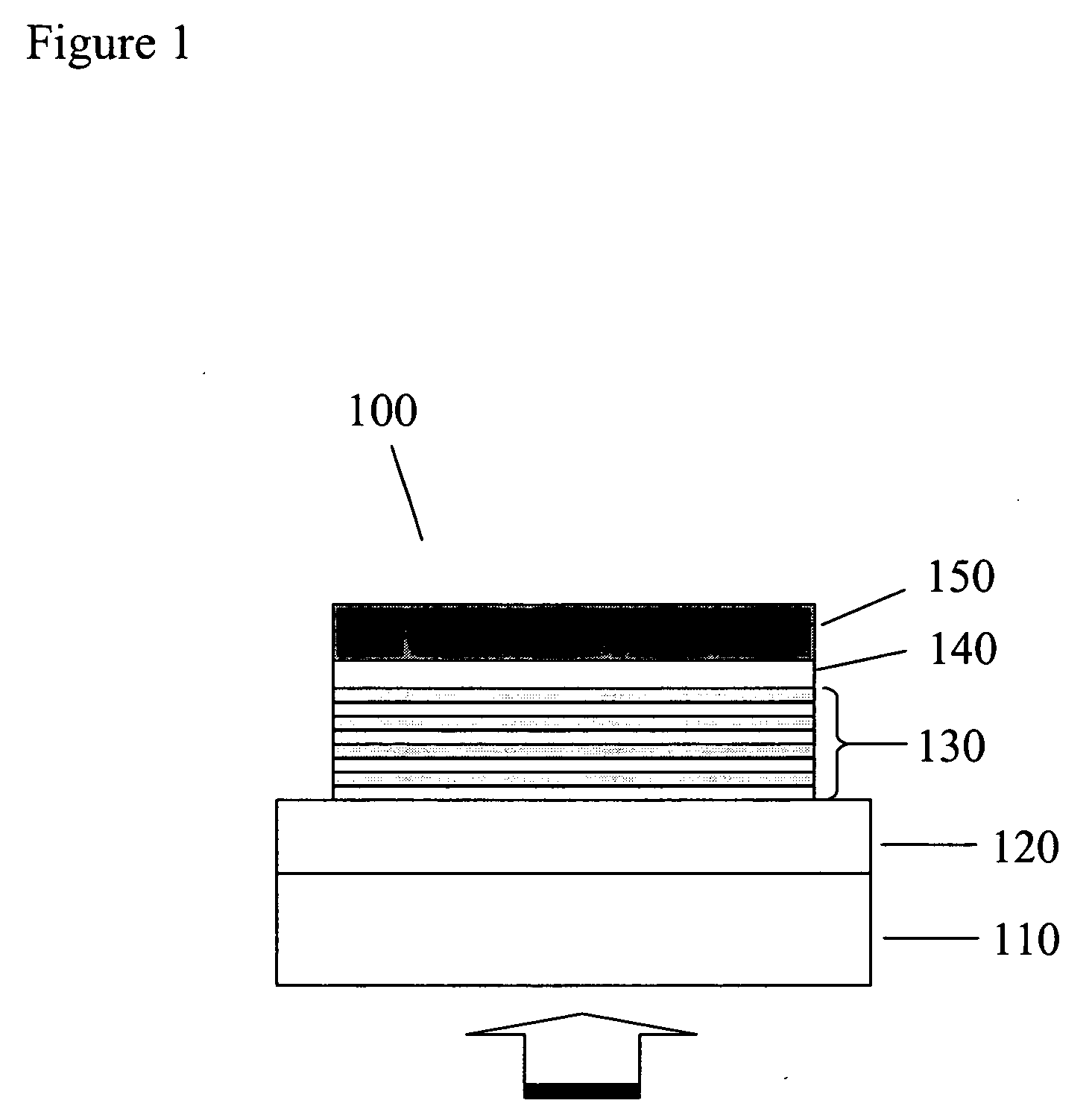Multilayer organic photodetectors with improved performance
a photodetector and multi-layer technology, applied in the field of organic photodetectors, can solve the problems of high quantum efficiency, undesirable outcomes in photosensitive optoelectronic devices, and device configuration predictions from donor/acceptor criteria may not be borne out by actual device performance, so as to reduce the dark current and reduce the dark current. , the effect of reducing the energy barrier for electron injection
- Summary
- Abstract
- Description
- Claims
- Application Information
AI Technical Summary
Benefits of technology
Problems solved by technology
Method used
Image
Examples
example 1
[0088] Devices having the general structure ITO / (CuPc / PTCBI)N / BCP 150 Å / Al 1000 Å were constructed. A 1500-Å-thick transparent, conducting ITO layer (sheet resistance ˜30 Ω / □) commercially precoated on a glass substrate serves as the anode [Applied Film Corp., 6797-T Winchester Circle, Boulder, Colo. 80301]. The substrate was cleaned in boiling trichloroethylene, acetone and boiling isopropanol before being loaded into an ultrahigh vacuum (UHV) organic molecular beam deposition (OMBD) [S. R. Forrest, Chem. Rev. 97, 1793 (1997)] chamber with a base pressure of 1×10−10 Torr. The active region of the photodetector consisting of alternating layers of CuPc and PTCBI was grown by OMBD at a rate of 0.3 to 0.4 Å / s at room temperature, followed by a 150-Å-thick BCP exciton-blocking layer. The thicknesses of the individual CuPc and PTCBI layers, xD and xA, respectively, were varied from 15 Å to 240 Å, and the number of CuPc / PTCBI bilayer periods, N, was varied from 16 to 1 accordingly, to mai...
example 2
[0108] Devices having the general structure ITO / (CuPc / PTCBI)N / BCP 150 Å / Al 1000 Å were constructed. The active region, disposed between an ITO anode and a metal cathode, consists of alternating layers of donor-like CuPc and acceptor-like 3,4,9,10-PTCBI, with the first CuPc layer in contact with the anode. A 150-Å-thick layer of BCP was deposited on top of the active region to serve as an exciton blocking layer. All the organic layers were deposited by the ultrahigh vacuum (UHV) process of organic molecular beam deposition (OMBD) at a rate of 0.3 to 0.4 Å / s at room temperature. The 1000-Å-thick Al cathode was deposited by thermal evaporation through a shadow mask with 1 mm diameter openings in a separate vacuum chamber with a base pressure of −6 Torr.
[0109] Two types of ITO films were used as the anodes of multilayer organic photodetectors: 1500-Å-thick ITO films with a sheet resistance of 30 Ω / □ commercially precoated on glass substrates [Applied Film Corp., 6797-T Winchester Circl...
PUM
 Login to View More
Login to View More Abstract
Description
Claims
Application Information
 Login to View More
Login to View More - R&D
- Intellectual Property
- Life Sciences
- Materials
- Tech Scout
- Unparalleled Data Quality
- Higher Quality Content
- 60% Fewer Hallucinations
Browse by: Latest US Patents, China's latest patents, Technical Efficacy Thesaurus, Application Domain, Technology Topic, Popular Technical Reports.
© 2025 PatSnap. All rights reserved.Legal|Privacy policy|Modern Slavery Act Transparency Statement|Sitemap|About US| Contact US: help@patsnap.com



